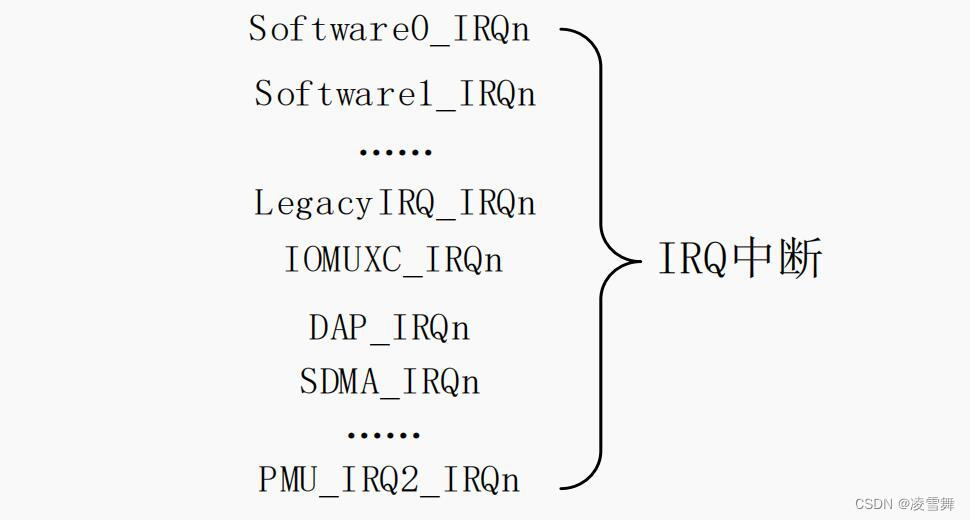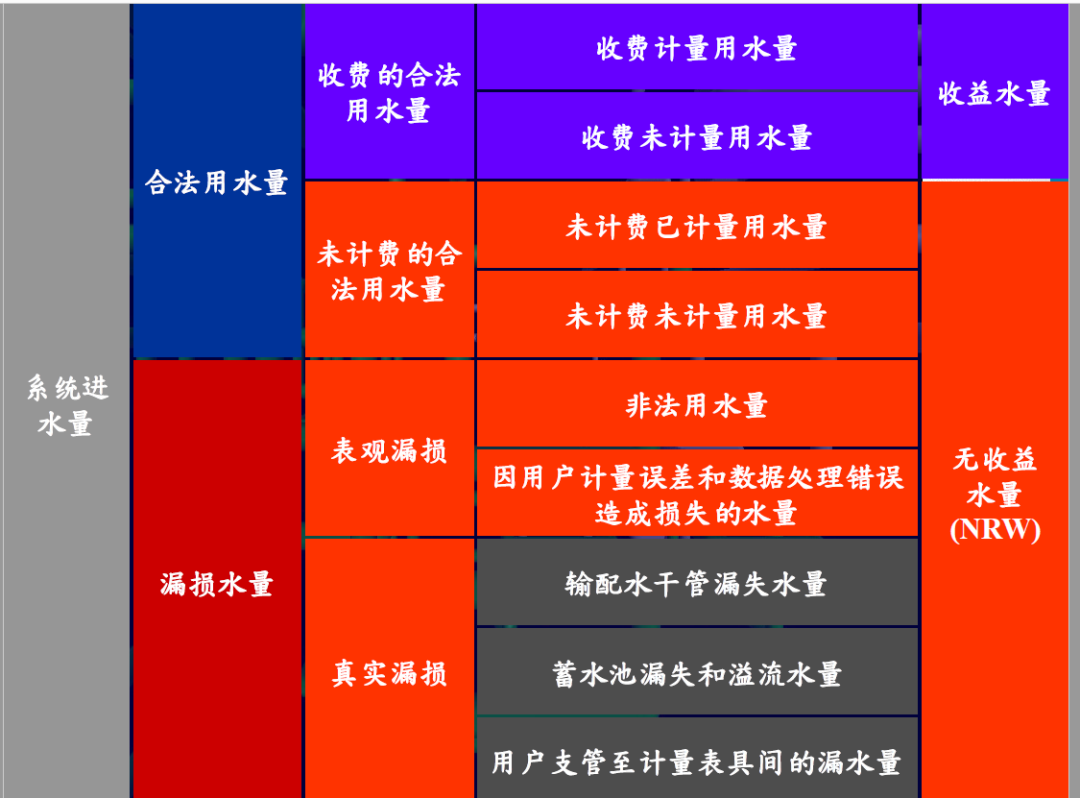买卖股票的最佳时机:无限次/冷冻期/k次【基础算法精讲 21】
来自0x3f:https://www.bilibili.com/video/BV1ho4y1W7QK/
介绍了【买卖股票系列问题】与【状态机 DP】,包括【至多/恰好/至少】的讲解。
文章目录
- 买卖股票问题和状态机DP
- (无限次)[122. 买卖股票的最佳时机 II](https://leetcode.cn/problems/best-time-to-buy-and-sell-stock-ii/)
- (含冷冻期)[309. 最佳买卖股票时机含冷冻期](https://leetcode.cn/problems/best-time-to-buy-and-sell-stock-with-cooldown/)
- (至多K次)[188. 买卖股票的最佳时机 IV](https://leetcode.cn/problems/best-time-to-buy-and-sell-stock-iv/)
- 恰好K次、至少K次怎么做?
- 练习
- (只买一次)[121. 买卖股票的最佳时机](https://leetcode.cn/problems/best-time-to-buy-and-sell-stock/)
- (至多两次,188弱化版)[123. 买卖股票的最佳时机 III](https://leetcode.cn/problems/best-time-to-buy-and-sell-stock-iii/)
- (无限次+手续费)[714. 买卖股票的最佳时机含手续费](https://leetcode.cn/problems/best-time-to-buy-and-sell-stock-with-transaction-fee/)
- [1911. 最大子序列交替和](https://leetcode.cn/problems/maximum-alternating-subsequence-sum/)
- 其他题目(笔试题)
- 恒生 3.31 T2题目(至多+初始资金+股份)
买卖股票问题和状态机DP
(无限次)122. 买卖股票的最佳时机 II
难度中等2076
给你一个整数数组 prices ,其中 prices[i] 表示某支股票第 i 天的价格。
在每一天,你可以决定是否购买和/或出售股票。你在任何时候 最多 只能持有 一股 股票。你也可以先购买,然后在 同一天 出售。
返回 你能获得的 最大 利润 。
示例 1:
输入:prices = [7,1,5,3,6,4]
输出:7
解释:在第 2 天(股票价格 = 1)的时候买入,在第 3 天(股票价格 = 5)的时候卖出, 这笔交易所能获得利润 = 5 - 1 = 4 。随后,在第 4 天(股票价格 = 3)的时候买入,在第 5 天(股票价格 = 6)的时候卖出, 这笔交易所能获得利润 = 6 - 3 = 3 。总利润为 4 + 3 = 7 。
示例 2:
输入:prices = [1,2,3,4,5]
输出:4
解释:在第 1 天(股票价格 = 1)的时候买入,在第 5 天 (股票价格 = 5)的时候卖出, 这笔交易所能获得利润 = 5 - 1 = 4 。总利润为 4 。
示例 3:
输入:prices = [7,6,4,3,1]
输出:0
解释:在这种情况下, 交易无法获得正利润,所以不参与交易可以获得最大利润,最大利润为 0 。
提示:
1 <= prices.length <= 3 * 1040 <= prices[i] <= 104
题解:prices = [7,1,5,3,6,4]
启发思路:最后一天发生了什么?
从第0天开始到第5天结束时的利润 = 从第0天开始到第4天结束时的利润 + 第五天的利润
- 第五天的利润:①不做 0 ②买入股票-4 ③卖出股票+4
关键词:天数、是否持有股票
**子问题?**到第i天结束时,持有/未持有股票的最大利润
**下一个子问题?**到第i-1天结束时,持有/未持有股票的最大利润

- 这种表示状态之间转换关系的图叫状态机,从上图看出状态转移一共有四种情况
定义状态转移方程:

递归边界:
dfs(-1, 0) = 0 : 第0天开始未持有股票,利润为0
dfs(-1, 1) = -∞:第0天开始不可能持有股票
递归入口:max(dfs(n-1, 0), dfs(n-1,1)) = dfs(n-1, 0)
记忆化搜索
class Solution {int[] prices;int[][] cache;public int maxProfit(int[] prices) {int n = prices.length;this.prices = prices;this.cache = new int[n][2];for(int i = 0; i < n; i++) Arrays.fill(cache[i], -1);return dfs(n-1, 0);}// hold = 1 持有股票,hold = 0 未持有股票public int dfs(int i, int hold){if(i < 0) return hold == 1 ? Integer.MIN_VALUE : 0;if(cache[i][hold] != -1) return cache[i][hold];if(hold == 1){// dfs(i, 1) = dfs(i-1, 1) 什么也不做// dfs(i, 1) = dfs(i-1, 0) - prices[i] 在i时刻买入股票return cache[i][hold] = Math.max(dfs(i-1, 1), dfs(i-1, 0) - prices[i]);}// dfs(i, 0) = dfs(i-1, 0) 什么也不做// dfs(i, 0) = dfs(i-1, 1) + prices[i] 在i时刻卖出股票return cache[i][hold] = Math.max(dfs(i-1, 0), dfs(i-1, 1) + prices[i]);}
}
翻译成递推:

class Solution {public int maxProfit(int[] prices) {int n = prices.length;int[][] f = new int[n+1][2];f[0][1] = Integer.MIN_VALUE; // 0时刻不可能持有股票for(int i = 0; i < n; i++){f[i+1][0] = Math.max(f[i][0], f[i][1] + prices[i]);f[i+1][1] = Math.max(f[i][1], f[i][0] - prices[i]);}return f[n][0]; // n时刻不持有股票}
}
空间优化:由于f[i+1]只用了f[i]这个状态,因此用两个变量滚动计算
class Solution {public int maxProfit(int[] prices) {int n = prices.length;int f0 = 0;int f1 = Integer.MIN_VALUE; // 0时刻不可能持有股票for(int p : prices){int newf0 = Math.max(f0, f1 + p); // 未持有:什么都不做,卖出股票f1 = Math.max(f1, f0 - p); // 持有 : 什么都不做,买入股票f0 = newf0;}return f0; // n时刻不持有股票}
}
(含冷冻期)309. 最佳买卖股票时机含冷冻期
难度中等1468
给定一个整数数组prices,其中第 prices[i] 表示第 i 天的股票价格 。
设计一个算法计算出最大利润。在满足以下约束条件下,你可以尽可能地完成更多的交易(多次买卖一支股票):
- 卖出股票后,你无法在第二天买入股票 (即冷冻期为 1 天)。
**注意:**你不能同时参与多笔交易(你必须在再次购买前出售掉之前的股票)。
示例 1:
输入: prices = [1,2,3,0,2]
输出: 3
解释: 对应的交易状态为: [买入, 卖出, 冷冻期, 买入, 卖出]
示例 2:
输入: prices = [1]
输出: 0
提示:
1 <= prices.length <= 50000 <= prices[i] <= 1000
题解:(在买入股票的时候前一天是不能卖出股票的)
含冷冻期问题类似打家劫舍,既然前一天不能有卖出操作,那么直接从i-2,0转移过来
class Solution {int[] prices;int[][] cache;public int maxProfit(int[] prices) {int n = prices.length;this.prices = prices;this.cache = new int[n][2];for(int i = 0; i < n; i++) Arrays.fill(cache[i], -1);return dfs(n-1, 0);}// hold = 1 持有股票,hold = 0 未持有股票public int dfs(int i, int hold){if(i < 0) return hold == 1 ? Integer.MIN_VALUE : 0;if(cache[i][hold] != -1) return cache[i][hold];if(hold == 1){// dfs(i, 1) = dfs(i-1, 1) 什么也不做//###########################################################// 只修改了在i时刻买入股票,从dfs(i-2, 0) - prices[i])转移过来// dfs(i, 1) = dfs(i-2, 0) - prices[i] 在i时刻买入股票return cache[i][hold] = Math.max(dfs(i-1, 1), dfs(i-2, 0) - prices[i]);}// dfs(i, 0) = dfs(i-1, 0) 什么也不做// dfs(i, 0) = dfs(i-1, 1) + prices[i] 在i时刻卖出股票return cache[i][hold] = Math.max(dfs(i-1, 0), dfs(i-1, 1) + prices[i]);}
}
转成递推
class Solution {public int maxProfit(int[] prices) {int n = prices.length;int[][] f = new int[n+2][2];f[1][1] = Integer.MIN_VALUE; // 0时刻不可能持有股票for(int i = 0; i < n; i++){f[i+2][0] = Math.max(f[i+1][0], f[i+1][1] + prices[i]);f[i+2][1] = Math.max(f[i+1][1], f[i][0] - prices[i]);}return f[n+1][0]; // n时刻不持有股票}
}
(至多K次)188. 买卖股票的最佳时机 IV
难度困难921
给定一个整数数组 prices ,它的第 i 个元素 prices[i] 是一支给定的股票在第 i 天的价格。
设计一个算法来计算你所能获取的最大利润。你最多可以完成 k 笔交易。
**注意:**你不能同时参与多笔交易(你必须在再次购买前出售掉之前的股票)。
示例 1:
输入:k = 2, prices = [2,4,1]
输出:2
解释:在第 1 天 (股票价格 = 2) 的时候买入,在第 2 天 (股票价格 = 4) 的时候卖出,这笔交易所能获得利润 = 4-2 = 2 。
示例 2:
输入:k = 2, prices = [3,2,6,5,0,3]
输出:7
解释:在第 2 天 (股票价格 = 2) 的时候买入,在第 3 天 (股票价格 = 6) 的时候卖出, 这笔交易所能获得利润 = 6-2 = 4 。随后,在第 5 天 (股票价格 = 0) 的时候买入,在第 6 天 (股票价格 = 3) 的时候卖出, 这笔交易所能获得利润 = 3-0 = 3 。
提示:
0 <= k <= 1000 <= prices.length <= 10000 <= prices[i] <= 1000
题解:因为限制了交易次数,所以要在递归过程中记录交易次数

递归边界和递归入口:

记忆化搜索
class Solution {int[] prices;int[][][] cache;public int maxProfit(int k, int[] prices) {int n = prices.length;this.prices = prices;this.cache = new int[n][k+1][2];for(int i = 0; i < n; i++)for(int j = 0; j <= k; j++)Arrays.fill(cache[i][j], -1);return dfs(n-1, k, 0);}// 第i天结束时至多完成j笔交易,持有/未持有股票的最大利润// hold = 1 持有股票,hold = 0 未持有股票public int dfs(int i, int j, int hold){if(j < 0) // 至多交易j次,j<0 不合法的方案return Integer.MIN_VALUE; if(i < 0) return hold == 1 ? Integer.MIN_VALUE : 0;if(cache[i][j][hold] != -1) return cache[i][j][hold];if(hold == 1){// dfs(i, j, 1) = dfs(i-1, j, 1) 什么也不做// dfs(i, j, 1) = dfs(i-1, j, 0) - prices[i] 在i时刻买入股票return cache[i][j][hold] = Math.max(dfs(i-1, j, 1), dfs(i-1, j, 0) - prices[i]);}// dfs(i, j, 0) = dfs(i-1, j, 0) 什么也不做// dfs(i, j, 0) = dfs(i-1, j-1, 1) + prices[i] 在i时刻卖出股票(增加一次交易次数)return cache[i][j][hold] = Math.max(dfs(i-1, j, 0), dfs(i-1, j-1, 1) + prices[i]);} // 增加交易次数(j-1)写在hold=1和=0都可以}
转成递推:
为什么有
k+2个状态?这里的第
k个状态表示最终结果,正常来说只需要从0到k-1个状态即可完成转移,这里总共k个状态,加上需要表示结果的第k个状态,总共k+1个;需要多加一个
-1状态是因为要给这个式子一个惩罚机制,当k小于0是不满足题意的,所以返回负无穷;转成递推之后呢,为了防止数组越界,所以需要将数组第二维度长度整体加一个
1,使得-1对上0,0对上1…,最后返回k+1就是原来的k。

class Solution {public int maxProfit(int k, int[] prices) {int n = prices.length;// 由于需要状态表示i<0 和 j<0 的情况,所以在f和每个f[i]前插入一个状态int[][][] f = new int[n + 1][k + 2][2];for (int i = 0; i < n; i++)for (int j = 0; j <= k + 1; ++j)Arrays.fill(f[i][j], Integer.MIN_VALUE / 2);for(int j = 1; j <= k+1; j++)f[0][j][0] = 0;for(int i = 0; i < n; i++){for(int j = 1; j <= k+1; j++){// hold=0 : cache[i][j][hold] = Math.max(dfs(i-1, j, 0), dfs(i-1, j-1, 1) + prices[i]);f[i+1][j][0] = Math.max(f[i][j][0], f[i][j-1][1] + prices[i]);// hold=1 : cache[i][j][hold] = Math.max(dfs(i-1, j, 1), dfs(i-1, j, 0) - prices[i]);f[i+1][j][1] = Math.max(f[i][j][1], f[i][j][0] - prices[i]);}}return f[n][k+1][0];}
}
空间优化:由于f[i+1]只用了f[i]这个状态,去掉一个维度
class Solution {public int maxProfit(int k, int[] prices) {int n = prices.length;// 由于需要状态表示i<0 和 j<0 的情况,所以在f和每个f[i]前插入一个状态int[][] f = new int[k + 2][2];for (int j = 0; j <= k + 1; ++j)f[j][1] = Integer.MIN_VALUE/2;f[0][0] = Integer.MIN_VALUE/2;for(int p : prices)// 和01背包类似,需要倒序遍历背包for(int j = k+1; j > 0; j--){// hold=0 : cache[i][j][hold] = Math.max(dfs(i-1, j, 0), dfs(i-1, j-1, 1) + prices[i]);f[j][0] = Math.max(f[j][0], f[j-1][1] + p);// hold=1 : cache[i][j][hold] = Math.max(dfs(i-1, j, 1), dfs(i-1, j, 0) - prices[i]);f[j][1] = Math.max(f[j][1], f[j][0] - p);}return f[k+1][0];}
}
恰好K次、至少K次怎么做?
区别在边界上

1、恰好K次
递归到i<0时,只有j=0是合法的,j>0都是不合法的
# 恰好
class Solution:def maxProfit(self, k: int, prices: List[int]) -> int:# 递推n = len(prices)f = [[[-inf] * 2 for _ in range(k + 2)] for _ in range(n + 1)]f[0][1][0] = 0 # 只需改这里for i, p in enumerate(prices):for j in range(1, k + 2):f[i + 1][j][0] = max(f[i][j][0], f[i][j][1] + p)f[i + 1][j][1] = max(f[i][j][1], f[i][j - 1][0] - p)return f[-1][-1][0]# 记忆化搜索# @cache# def dfs(i: int, j: int, hold: bool) -> int:# if j < 0:# return -inf# if i < 0:# return -inf if hold or j > 0 else 0# if hold:# return max(dfs(i - 1, j, True), dfs(i - 1, j - 1, False) - prices[i])# return max(dfs(i - 1, j, False), dfs(i - 1, j, True) + prices[i])# return dfs(n - 1, k, False)
2、至少K次怎么做?
递归到 至少0次 时,等价于 交易次数没有限制
# 至少
class Solution:def maxProfit(self, k: int, prices: List[int]) -> int:# 递推n = len(prices)f = [[[-inf] * 2 for _ in range(k + 1)] for _ in range(n + 1)]f[0][0][0] = 0for i, p in enumerate(prices):f[i + 1][0][0] = max(f[i][0][0], f[i][0][1] + p)f[i + 1][0][1] = max(f[i][0][1], f[i][0][0] - p) # 无限次for j in range(1, k + 1):f[i + 1][j][0] = max(f[i][j][0], f[i][j][1] + p)f[i + 1][j][1] = max(f[i][j][1], f[i][j - 1][0] - p)return f[-1][-1][0]# 记忆化搜索# @cache# def dfs(i: int, j: int, hold: bool) -> int:# if i < 0:# return -inf if hold or j > 0 else 0# if hold:# return max(dfs(i - 1, j, True), dfs(i - 1, j - 1, False) - prices[i])# return max(dfs(i - 1, j, False), dfs(i - 1, j, True) + prices[i])# return dfs(n - 1, k, False)
练习
(只买一次)121. 买卖股票的最佳时机
难度简单2920
给定一个数组 prices ,它的第 i 个元素 prices[i] 表示一支给定股票第 i 天的价格。
你只能选择 某一天 买入这只股票,并选择在 未来的某一个不同的日子 卖出该股票。设计一个算法来计算你所能获取的最大利润。
返回你可以从这笔交易中获取的最大利润。如果你不能获取任何利润,返回 0 。
示例 1:
输入:[7,1,5,3,6,4]
输出:5
解释:在第 2 天(股票价格 = 1)的时候买入,在第 5 天(股票价格 = 6)的时候卖出,最大利润 = 6-1 = 5 。注意利润不能是 7-1 = 6, 因为卖出价格需要大于买入价格;同时,你不能在买入前卖出股票。
示例 2:
输入:prices = [7,6,4,3,1]
输出:0
解释:在这种情况下, 没有交易完成, 所以最大利润为 0。
提示:
1 <= prices.length <= 1050 <= prices[i] <= 104
一、前缀和解法:
class Solution {public int maxProfit(int[] prices) {int n = prices.length;int[] pre = new int[n];//记录在i之前的最低股票价格pre[0] = prices[0];for(int i = 1; i < n; i++){pre[i] = Math.min(pre[i-1], prices[i]);}int res = 0;for(int i = 0; i < n; i++){res = Math.max(res, prices[i] - pre[i]);}return res;}
}
二、股票问题通用解法:
https://leetcode.cn/problems/best-time-to-buy-and-sell-stock/solution/gen-zhao-ling-shen-xue-suan-fa-dong-gui-z0fo5/
需要用一个变量 j = 0, 1 来对第i天持有的股票数量进行保存
- 从最后一天往前推,最后一天可能持有股票也可能不持有股票,那么当然是不持有股票赚的多(持有代表只有买没有卖,且题目限定只有一支股票)
- 回溯+记忆化搜索:
- 若第
i天持有1支股票,那么在第i-1天的最大收益可能是在这一天买入了股票 (单纯扣钱)(-price[i])或是没有任何操作(dfs(i-1, 1)) - 若第
i天持有0支股票,那么在第i-1天的最大收益可能是卖掉了股票 (卖掉加钱)(dfs(i-1, 0)+price[i])或是没有任何操作(dfs(i-1,0))
- 若第
class Solution {int[] prices;int[][] cache;public int maxProfit(int[] prices) {int n = prices.length;this.prices = prices;cache = new int[n][2];for(int i = 0; i < n; i++) Arrays.fill(cache[i], -1);return dfs(n-1, 0);}public int dfs(int i, int j){if(i < 0) // 初始状态i=0 不持有状态 ,初始化为0return j == 1 ? -prices[0] : 0;if(cache[i][j] != -1) return cache[i][j];if(j == 1){// 持有股票 : 不操作, 在i时刻买入股票return cache[i][j] = Math.max(dfs(i-1, 1), -prices[i]);}// 不持有股票: 不操作, 在i时刻卖出股票return cache[i][j] = Math.max(dfs(i-1, 0), dfs(i-1, 1) + prices[i]);}
}
改成递推
class Solution {public int maxProfit(int[] prices) {int n = prices.length;int[][] f = new int[n+1][2];f[0][0] = 0;f[0][1] = Integer.MIN_VALUE/2;for(int i = 0; i < n; i++){f[i+1][0] = Math.max(f[i][0], f[i][1] + prices[i]);f[i+1][1] = Math.max(f[i][1], -prices[i]);}return f[n][0];}
}
(至多两次,188弱化版)123. 买卖股票的最佳时机 III
难度困难1388
给定一个数组,它的第 i 个元素是一支给定的股票在第 i 天的价格。
设计一个算法来计算你所能获取的最大利润。你最多可以完成 两笔 交易。
**注意:**你不能同时参与多笔交易(你必须在再次购买前出售掉之前的股票)。
示例 1:
输入:prices = [3,3,5,0,0,3,1,4]
输出:6
解释:在第 4 天(股票价格 = 0)的时候买入,在第 6 天(股票价格 = 3)的时候卖出,这笔交易所能获得利润 = 3-0 = 3 。随后,在第 7 天(股票价格 = 1)的时候买入,在第 8 天 (股票价格 = 4)的时候卖出,这笔交易所能获得利润 = 4-1 = 3 。
示例 2:
输入:prices = [1,2,3,4,5]
输出:4
解释:在第 1 天(股票价格 = 1)的时候买入,在第 5 天 (股票价格 = 5)的时候卖出, 这笔交易所能获得利润 = 5-1 = 4 。 注意你不能在第 1 天和第 2 天接连购买股票,之后再将它们卖出。 因为这样属于同时参与了多笔交易,你必须在再次购买前出售掉之前的股票。
示例 3:
输入:prices = [7,6,4,3,1]
输出:0
解释:在这个情况下, 没有交易完成, 所以最大利润为 0。
示例 4:
输入:prices = [1]
输出:0
提示:
1 <= prices.length <= 1050 <= prices[i] <= 105
三维记忆化搜索【超时】
class Solution {int[] prices;int[][][] cache;public int maxProfit(int[] prices) {int n = prices.length;this.prices = prices;cache = new int[n][3][2];for(int i = 0; i < n; i++)for(int j = 0; j <= 2; j++)Arrays.fill(cache[i][j], -1);return f(n-1, 2, 0);}public int f(int i, int j, int hold){if(j < 0) return Integer.MIN_VALUE/2;if(i < 0){return hold == 0 ? 0 : Integer.MIN_VALUE/2;}if(cache[i][j][hold] != -1) return cache[i][j][hold];if(hold == 1){return cache[i][j][hold] = Math.max(f(i-1, j, 1), f(i-1, j, 0) - prices[i]);}return cache[i][j][hold] = Math.max(f(i-1, j, 0), f(i-1, j-1, 1) + prices[i]);}
}
转递推
class Solution {public int maxProfit(int[] prices) {int n = prices.length;int[][][] f = new int[n+1][4][2];for(int i = 0; i < n; i++){for(int j = 0; j <= 2+1; j++){Arrays.fill(f[i][j], Integer.MIN_VALUE/2);}}for(int j = 1; j <= 2+1; j++){f[0][j][0] = 0;}for(int i = 0; i < n; i++){for(int j = 1; j <= 2+1; j++){f[i+1][j][0] = Math.max(f[i][j][0], f[i][j-1][1] + prices[i]);f[i+1][j][1] = Math.max(f[i][j][1], f[i][j][0] - prices[i]);}}return f[n][2+1][0];}
}
(无限次+手续费)714. 买卖股票的最佳时机含手续费
难度中等886
给定一个整数数组 prices,其中 prices[i]表示第 i 天的股票价格 ;整数 fee 代表了交易股票的手续费用。
你可以无限次地完成交易,但是你每笔交易都需要付手续费。如果你已经购买了一个股票,在卖出它之前你就不能再继续购买股票了。
返回获得利润的最大值。
**注意:**这里的一笔交易指买入持有并卖出股票的整个过程,每笔交易你只需要为支付一次手续费。
示例 1:
输入:prices = [1, 3, 2, 8, 4, 9], fee = 2
输出:8
解释:能够达到的最大利润:
在此处买入 prices[0] = 1
在此处卖出 prices[3] = 8
在此处买入 prices[4] = 4
在此处卖出 prices[5] = 9
总利润: ((8 - 1) - 2) + ((9 - 4) - 2) = 8
示例 2:
输入:prices = [1,3,7,5,10,3], fee = 3
输出:6
提示:
1 <= prices.length <= 5 * 1041 <= prices[i] < 5 * 1040 <= fee < 5 * 104
题解:只需要在买入或者卖出时添加上手续费,其他与无限次交易相同
记忆化搜索
class Solution {int[] prices;int[][] cache;int fee;public int maxProfit(int[] prices, int fee) {int n = prices.length;this.prices = prices;this.fee = fee;cache = new int[n][2];for(int i = 0; i < n; i++) Arrays.fill(cache[i], -1);return f(n-1, 0);}public int f(int i, int hold){if(i < 0) return hold == 0 ? 0 : Integer.MIN_VALUE/2;if(cache[i][hold] != -1) return cache[i][hold];if(hold == 1){return cache[i][hold] = Math.max(f(i-1, 1), f(i-1, 0) - prices[i]);}return cache[i][hold] = Math.max(f(i-1, 0), f(i-1, 1) + prices[i] - fee);}
}
转递推
class Solution {public int maxProfit(int[] prices, int fee) {int n = prices.length;int[][] dp = new int[n+1][2];for(int i = 0; i <= n; i++) Arrays.fill(dp[i], Integer.MIN_VALUE/2);dp[0][0] = 0;for(int i = 0; i < n; i++){dp[i+1][0] = Math.max(dp[i][0], dp[i][1] + prices[i] - fee);dp[i+1][1] = Math.max(dp[i][1], dp[i][0] - prices[i]);}return dp[n][0];}
}
1911. 最大子序列交替和
难度中等46
一个下标从 0 开始的数组的 交替和 定义为 偶数 下标处元素之 和 减去 奇数 下标处元素之 和 。
- 比方说,数组
[4,2,5,3]的交替和为(4 + 5) - (2 + 3) = 4。
给你一个数组 nums ,请你返回 nums 中任意子序列的 最大交替和 (子序列的下标 重新 从 0 开始编号)。
一个数组的 子序列 是从原数组中删除一些元素后(也可能一个也不删除)剩余元素不改变顺序组成的数组。比方说,[2,7,4] 是 [4,**2**,3,**7**,2,1,**4**] 的一个子序列(加粗元素),但是 [2,4,2] 不是。
示例 1:
输入:nums = [4,2,5,3]
输出:7
解释:最优子序列为 [4,2,5] ,交替和为 (4 + 5) - 2 = 7 。
示例 2:
输入:nums = [5,6,7,8]
输出:8
解释:最优子序列为 [8] ,交替和为 8 。
示例 3:
输入:nums = [6,2,1,2,4,5]
输出:10
解释:最优子序列为 [6,1,5] ,交替和为 (6 + 5) - 1 = 10 。
提示:
1 <= nums.length <= 1051 <= nums[i] <= 105
分两种情况讨论:
1.以 i 处结尾时长度为奇数的最大交替和f[i][1]:
- 不用当前元素,为
f[i - 1][1] - 可以接在上一个偶数序列后,追加当前元素
f[i - 1][0] + nums[i])
为什么是
+nums[i]?,考虑为空序列的情况,当选择当前元素,则从空序列(偶数)转移过来就是加
2.以 i 处结尾时长度为偶数的最大交替和f[i][0]:
- 不用当前元素,为
f[i - 1][0] - 可以接在上一个奇数序列后,减去当前元素
f[i - 1][1] - nums[i])
这两种情况,都取各自的最大值,也就是
f[i][0] = Math.max(f[i - 1][0], f[i - 1][1] - nums[i]);
f[i][1] = Math.max(f[i - 1][1], f[i - 1][0] + nums[i]);
由于题中描述 nums[i]>0 所以取奇数列的值一定大于偶数列,最后返回f[n - 1][1]即可
记忆化搜索:
class Solution {int[] nums;long[][] cache;// 交替和 定义为 偶数 下标处元素之 和 减去 奇数 下标处元素之 和public long maxAlternatingSum(int[] nums) {int n = nums.length;this.nums = nums;cache = new long[n][2];for(int i = 0; i < n; i++) Arrays.fill(cache[i], -1l);// 注意到长度为偶数的子序列的最后一个元素在交替和中需要取负号// 因此在nums元素均为正数的情况下,不如不计入该元素// 因此 f[n][1] > f[n][0] 恒成立return f(n-1, 1);}// f(i, 0): 第 i 个元素处理完后,最优子序列长度为偶数时的最大交替和// f(i, 1): 第 i 个元素处理完后,最优子序列长度为奇数时的最大交替和// 初始情况 f(0, 0) = 0, f(0, 1) = 负无穷public long f(int i, int odd){if(i < 0){return odd == 1 ? Integer.MIN_VALUE/2 : 0;}if(cache[i][odd] != -1) return cache[i][odd];if(odd == 1){// 最优子序列长度为奇数时,// 不选i,f(i, 1)从f(i-1, 1)转移过来// 选i, f(i, 1)从f(i-1, 0)+nums[i]转移过来return cache[i][odd] = Math.max(f(i-1, 1), f(i-1, 0) + nums[i]);}return cache[i][odd] = Math.max(f(i-1, 0), f(i-1, 1) - nums[i]);}
}
转递推
class Solution {public long maxAlternatingSum(int[] nums) {int n = nums.length;long[][] f = new long[n+1][2];f[0][1] = Long.MIN_VALUE/2;f[0][0] = 0l;for(int i = 0; i < n; i++){f[i+1][0] = Math.max(f[i][0], f[i][1] - nums[i]);f[i+1][1] = Math.max(f[i][1], f[i][0] + nums[i]);}return f[n][1];}
}
其他题目(笔试题)
恒生 3.31 T2题目(至多+初始资金+股份)
题目来源:https://leetcode.cn/problems/merge-nodes-in-between-zeros/solution/c-by-condescending-carsonsof-5wp3/

记忆化搜索
class Solution {double[] prices;double[][][] cache;public double maxProfit(int k, double[] prices, double origin) {int n = prices.length;cache = new double[n][k+1][2];for(int i = 0; i < n; i++){for(int j = 0; j <= k; j++){cache[i][j] = -1;}}// k = 2return dfs(n-1, k, 0);}public double dfs(int i, int j, int hold){if(i < 0){// 初始资金50000return hold == 0 ? origin : Integer.MIN_VALUE/2;}if(j < 0) return Integer.MAX_VALUE/2;if(cache[i][j][hold] != -1) return cache[i][j][hold];if(hold == 1){return cache[i][j][hold] = Math.max(dfs(i-1, j, 1), dfs(i-1, j-1, 0)/prices[i]);}return cache[i][j][hold] = Math.max(dfs(i-1, j, 0), dfs(i-1, j, 1)*prices[i]);}
}
转递推
class Solution {public double maxProfit(int k, double[] prices, double origin) {int n = prices.length;double[][][] f = new double[n+1][k+2][2];for(int i = 0; i <= n; i++){for(int j = 0; j <= k+1; j++){Arrays.fill(f[i][j], Integer.MIN_VALUE/2); }}for(int j = 1; j <= k+1; j++){f[0][j][0] = origin;}for(int i = 0; i < n; i++){for(int j = 1; j <= k+1; j++){f[i+1][j][0] = Math.max(f[i][j][0], f[i][j-1][1] * prices[i]);f[i+1][j][1] = Math.max(f[i][j][1], f[i][j][0] / prices[i]);}}return f[n][k+1][0] - origin;}
}
空间压缩
class Solution {public double maxProfit(int k, double[] prices, double origin) {int n = prices.length;double[][] f = new double[k+2][2];for(int j = 0; j <= k+1; j++){Arrays.fill(f[j], Integer.MIN_VALUE/2); }for(int j = 1; j <= k+1; j++){f[j][0] = origin;}for(int i = 0; i < n; i++){for(int j = k+1; j > 0; j--){f[j][0] = Math.max(f[j][0], f[j-1][1] * prices[i]);f[j][1] = Math.max(f[j][1], f[j][0] / prices[i]);}}return f[k+1][0] - origin;}
}






